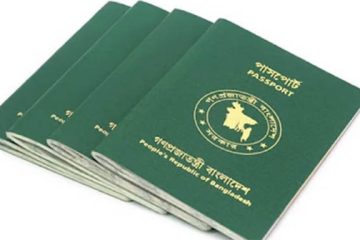The government would install 12 more inflatable rubber dams on medium and small rivers in as many districts at an estimated cost of Tk 167.58 crore for dry season irrigation, officials said.
They said that each dam would have the capacity to irrigate more than a thousand acres of crop land using surface water.
The inflatable rubber dams are cylindrical rubber fabrics placed across channels to raise the upstream water for irrigation, flood control or other uses.
There are more than 2,000 inflatable rubber dams around the world, notably in China, India, Canada and Italy.
Durability was demonstrated by a rubber dam in eastern Onatrio, Canda, which had to be replaced after it gave service for 35 years.
Water expert Ain un Nishat said that rubber dams with sluice gates could regulate the channel flows to minimise or control inundation.
The Agricultural Extension Department and the Local Government and Engineering Department would later this month start building the infrastructure on the ground for installing four of the rubber dams.
The government took the second phase of the project for irrigating crop land using
12 rubber dams at the outset of the fiscal year in Jul.
In the first phase, 12 rubber dams were installed in eight years beginning 2000 at different locations in the country for increasing food output.
In 1995, the first two rubber dams were installed in Bangladesh with support from China on the Banskhali and Idgaon canals in Cox’s Bazaar.
‘Flexibility’ is the main advantage of the rubbers dams, which can be filled with water whenever needed and lifted above the surface to heights up to 12 feet, the project director, AKM Harunur Rashid, told New Age.
With a little training, he said, the farmers can maintain the dams on their own.
Per acre irrigation cost using the rubber dams, he said, could vary between Tk 600 and Tk 1000, or just half of what a farmer needs to spend for lifting groundwater using deep tube-wells.
He said that Water Management Co-operative Associations of local farmers operate and maintain the rubber dams.
The project, he said, was taken with the main objective of irrigating the boro crop.
But, he said that the rubber dams could be handy for supplementary irrigation in the drought prone regions of the country for raising the aman crop, besides raising the boro crop at least 15 days ahead of the usual schedule to avoid the havoc played by flash floods that frequently trouble the country’s haor belt, June onwards.
But environmentalist Pavel Partha told New Age a rubber dam halts the flow of a river to overflow its banks to aggravate the inundation.
In the winter of 2006, he said, Khasiamara, a village in Dowarabazar upazila in Sunamganj, experienced water logging because a rubber dam was built on the Khasiamara canal.
Rubber dams harm the fish population more than the conventional dams do, he said quoting people living nearby.
Moreover, he said, he objected to commercialisation of water in the name of dams.
He said that there should be no bar for the local communities to use natural water whenever they need.
He called for ensuring that water management did not harm humans or other entities in the nature.




















